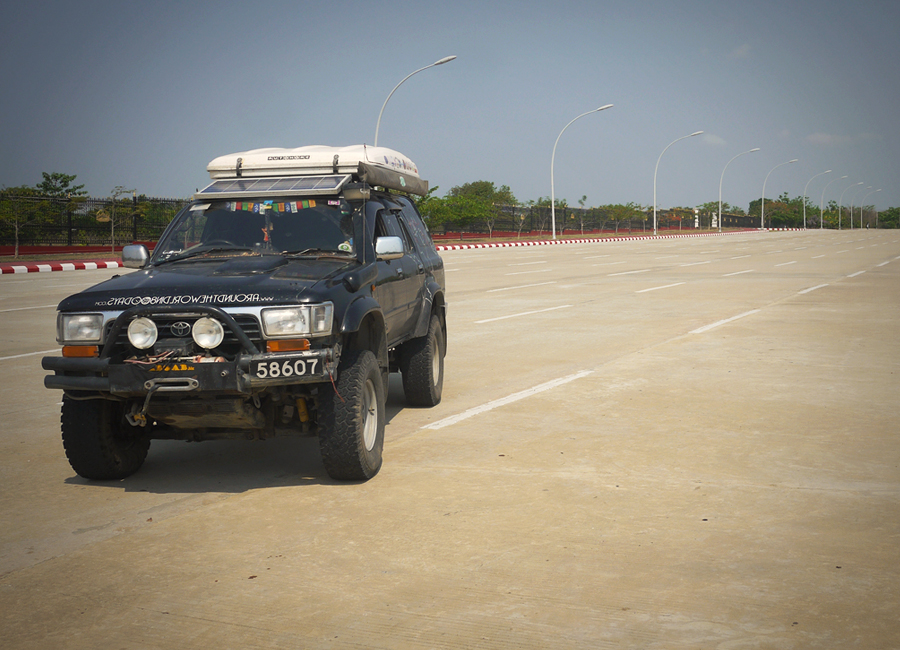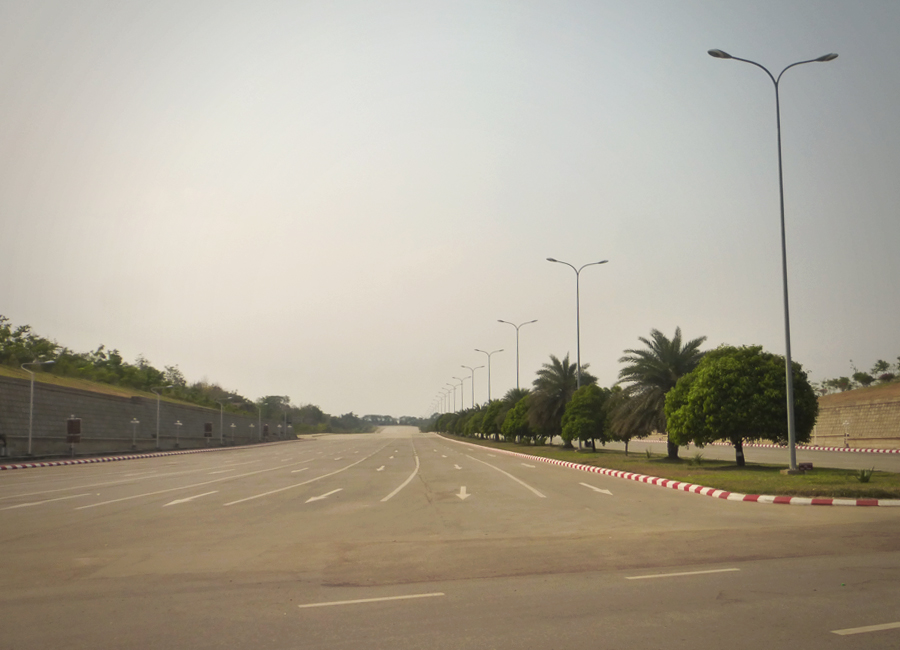|
On the 6th November 2006, the administrative capital of Myanmar (aka Burma) was moved, with minimal explanation by the military government, to an empty-ish plot of land (now named Naypyidaw) 200 miles north of Yangon (aka Rangoon), the previous capital. Naypyidaw is an eerily desolate modern-day ghost town, not one that has been deserted but one that has never been inhabited. The city has one high school offering basic education, very few shops and virtually no public transport network with the exception of one taxi company which is operated by the military! This lack of infrastructure makes the city less than desirable. The current population consists mainly of government employees and administrative officials who were forced to move there. Due to the lack of facilities in the city many families were split up when the government forced it’s employees to move. As utilisation of the vast new city is very low the consequences of such an immense project have been criticised by the outside world. With an estimated cost of $3–4 billion the national economic impact of such a huge construction effort, over a relatively short period, in such a poor country must have been considerable. Due to the location of the new capital the cost of doing business with government has increased, this is due to the excessive journey time from Yangon, where most business offices are based. It seems crazy that such money was, and still is, being spent on a huge city that no one wants or uses! The rationale for moving the city is debateable, some theorists believe that the capital was moved because Than Shwe, the previous head of state, wanted a ‘vanity project’ to compete with those of other authoritarian leaders, especially in Central Asia, who may be seeking to amplify their own personality cults. It is more likely though that the move was tactical and initiated to secure the capital and relocate it centrally away from the country’s borders: Yangon is a coastal city and vulnerable to a nautical attack. The new central location lends itself to the city becoming a transportation hub adjacent to the volatile states of Shan, Kayah and Kayin. It was felt by governmental and military leaders that a stronger military and governmental presence nearby might provide stability to those chronically turbulent regions. Sadly the most logical reason for moving the capital is much less interesting; Yangon had simply become too congested with little room for future expansion. In stark contrast to Istanbul, Tehran or Delhi driving is easy on the empty streets. The massive vacant 20-lane highways were designed to future proof the city for expansion but are also rumoured to be able to accommodate military aircraft landing.
We stopped outside the Parliamentary complex and presidential palace at the site where the Top Gear team had played football on the motorway and drag raced! The architecturally Stalinist buildings are gargantuan and gaudy, the only thing that roots them in local culture are the faux Burmese roofs. Up until the 2015 landmark elections, the Parliamentary complex and presidential palace actually held little authority. True power was (and possibly still is) located in one of the cities Crystal Maze-esq named zones; the Commercial Zone, International Zone, Residential Zone, the Ministry Zone and Military Zone. The top ranking military officers and important government personnel live in the secretive military zone, conveniently located 7 miles away. The whole area is shrouded in mystery, is strictly forbidden and apparently consists of a complex network of tunnels and bunkers. We obviously stayed in the Hotel Zone, in one of the 12 huge, unfinished, Soviet-esq hotels that loom from the wide, empty streets. The International Zone caters for foreign embassies, so far only Bangladesh has moved in! The residential zone is one of the most interesting. The apartments are allotted according to rank and marital status. The identical apartment blocks, of which there are 1,200, have colour-coded roofs; the Ministry of Health employees live in buildings with blue roofs, employees from the Ministry of Agriculture live in buildings with green roofs. High-ranking administrative officials live in mansions. Like Milton Keynes, where Emma grew up, this new city is a ‘masterpiece’ of town planning. Naypyidaw’s genius, unlike Milton Keynes however is not centred around roundabouts but focused on quashing regime change and nullifying dissent through urban design and cartography. Historically the public square has been the epicentre of democratic expression, most revolutions have started from protests in public squares where statues of dictators have toppled. Naypyidaw has no public squares! The wide streets are harder for prospective rioters to barricade and easier for tanks, helicopters and even planes to manoeuvre. The enormity of the city is designed to dwarf the individual and supress active participation within the metropolis; the scale is intended to intimidate the citizens to feel subservient to the power of the state. The presidential palace even has a moat! In stark contrast to the rest of Myanmar, with its humble, friendly villages, towns and rural roads, Naypyidaw sticks out like an urban sore thumb. A disparity so evident you feel like you have entered some kind of twilight zone, a hollow existence in a void of a city the previous government tried to force on a population where the majority still live modest, subsistent, family-orientated lifestyles. Hopefully the new, recently elected government, spearheaded by Aung San Suu Kyi will make wiser decisions for the future of the country.
0 Comments
Your comment will be posted after it is approved.
Leave a Reply. |
Archives
July 2020
Categories
All
|
Proudly powered by Weebly



 RSS Feed
RSS Feed